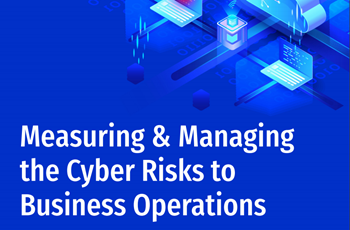Picture, if you will, a large, well-funded enterprise. Working with a massive budget, the IT department has invested in top-of-the-line cybersecurity infrastructure. They’ve pulled out all the stops — advanced threat detection, file security, endpoint management, and more.
Your business is at risk
Yet in spite of how much money they’ve put into software and hardware, they’ve neglected one very important thing. Outside of IT, no one is really committed to cybersecurity. They assume it’s the responsibility of the techies, and have basically left it at that. As a result, a hacker targeting the business needs only to send a phishing email.
From there, it’s all downhill.
The fact is, the days when the IT department could be the sole authority overseeing cybersecurity are well behind us. Between smartphones, cloud computing, and the Internet of Things, employees are more empowered than ever. Without a corporate culture that makes the protection of corporate assets a priority, your organization is not secure.
How to keep your business secure
Everyone has a role in cybersecurity. Everyone is accountable for keeping corporate assets safe. And everyone should understand the dual concept of due diligence and mindfulness.
There’s just one problem. How exactly do you get there? Where do you start?
Simply put, at the top. Bring the C-suite into the conversation. Pay attention to the unique needs of each department, and collaborate with them on the ways you might incorporate cybersecurity solutions in a way that enables, rather than hinders them. More importantly, don’t focus on the technical side of asset protection.
Management doesn’t have time to learn technical details about security solutions or cyberattacks. They aren’t going to fall for a FUD approach that focuses solely on worst-case scenarios. They don’t care about meaningless metrics or unrealistic promises.
What they do care about is that you make a solid business case for good security. Give them a quantifiable measurement of the losses your business could accrue from an attack. Discuss the potential for reputational damage, and how that might impact the business. Paint a clear picture of the systems and files that are at risk, and a clear idea of how you might protect them.
Once you’ve done that, your next step is to work with them on training programs for your employee base. Each department should ideally have its own set of educational materials, written in language that will resonate with them. Beyond that, it’s simply a matter of brainstorming.
Cybersecurity is about more than fancy new gadgets and shiny new infrastructure. It’s about more than how much money you invest in software solutions. It’s an organization-wide initiative - an ongoing process that needs to be part of the very heart of corporate culture.
If you fail to understand that, then it doesn’t matter what you do — your business is not secure.
Access the latest business knowledge in IT
Get Access


Comments
Join the conversation...